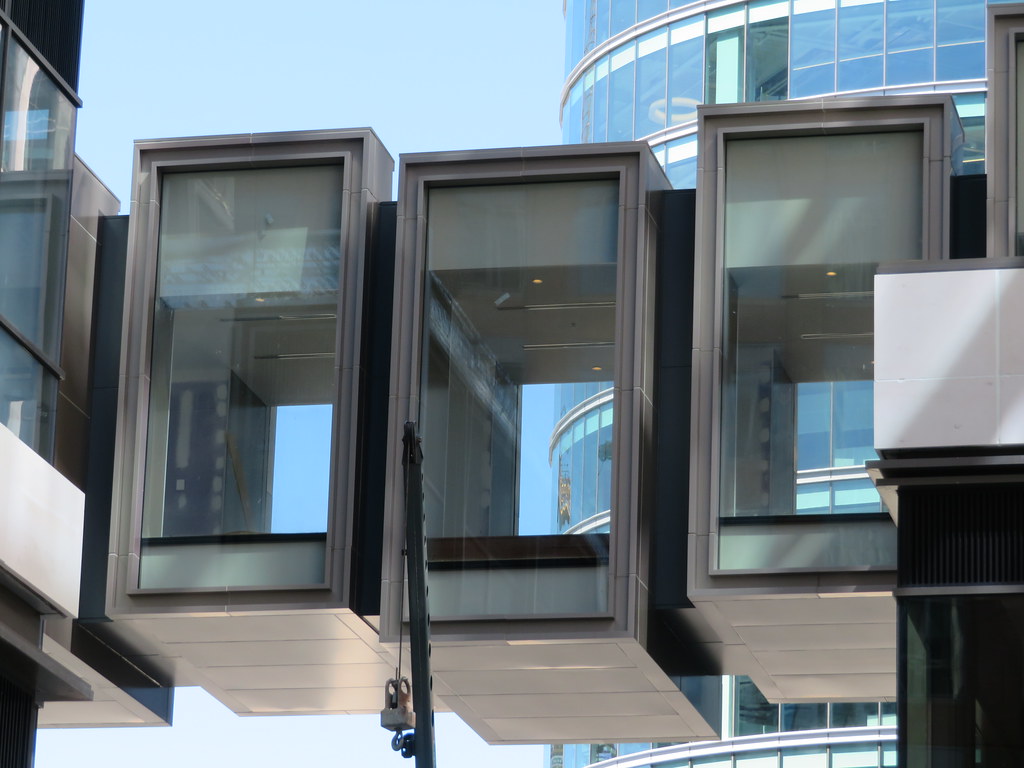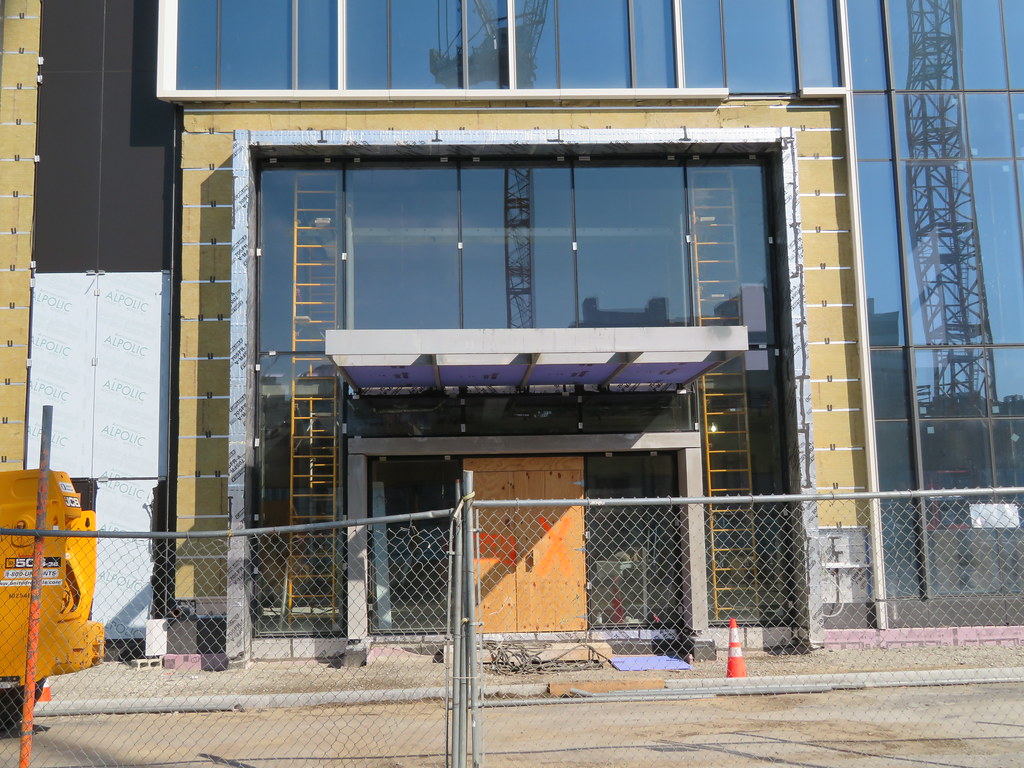Slowly but surely the architecture is getting better and better with each new development. This is setting the next benchmark. Parcel N and P will then set the next.. and so on. Hopefully well then get a liberty mutual on the main strip, then a library, fire station, police station, a true park instead of a lawn... then protected bike lanes, and finally conversion of the silver line to light rail and maybe somehow even use track 61... Who knows.
Regardless things are moving in the right direction towards a fairly nice neighborhood once filled out. Theres still soooo much space left in the neighborhood as a whole, like the fort point area, backside and whole area beyond the bcec etc.. that with the right moves it could become a great neighborhood. It could also go the other way, theres enough left that the jury is still out. Its up to them, N and P good, the most recent GE plot render.. very bad.
 IMG_3141 by Bos Beeline, on Flickr
IMG_3141 by Bos Beeline, on Flickr IMG_3142 by Bos Beeline, on Flickr
IMG_3142 by Bos Beeline, on Flickr IMG_3143 by Bos Beeline, on Flickr
IMG_3143 by Bos Beeline, on Flickr IMG_3144 by Bos Beeline, on Flickr
IMG_3144 by Bos Beeline, on Flickr IMG_3146 by Bos Beeline, on Flickr
IMG_3146 by Bos Beeline, on Flickr IMG_3147 by Bos Beeline, on Flickr
IMG_3147 by Bos Beeline, on Flickr


 IMG_3314
IMG_3314 IMG_3320
IMG_3320 IMG_3322
IMG_3322 IMG_3323
IMG_3323 IMG_3324
IMG_3324
 IMG_3326
IMG_3326 IMG_3311
IMG_3311 Tower 2
Tower 2 IMG_3331
IMG_3331 IMG_4933
IMG_4933 IMG_4934
IMG_4934 IMG_4935
IMG_4935 IMG_4940
IMG_4940 IMG_4939
IMG_4939 IMG_4970
IMG_4970 IMG_4976
IMG_4976